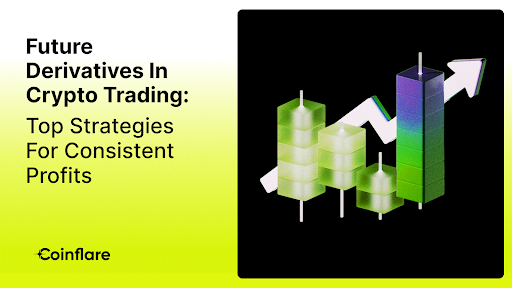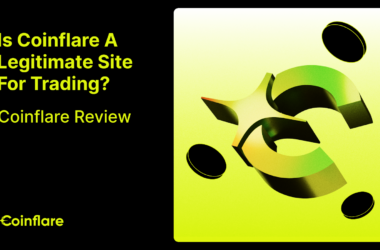Catalogue - Key Takeaways Show

Key Takeaways
- Crypto derivatives are financial contracts whose value is tied to underlying crypto assets like BTC or ETH, and they include futures, perpetual swaps, and options.
- Futures derivatives allow traders to speculate on or hedge against future price movements, with a set expiry date and costs related to holding the asset.
- Perpetual swaps function like futures but have no expiration date. Their prices are anchored to the spot market through funding rates, which encourage traders to keep the market balanced.
- Options contracts give traders the right (but not obligation) to buy or sell an asset at a set price and time. They are useful for both speculative and risk management purposes.
- Popular trading strategies include:
- Directional trading, which involves going long or short based on expected price movement.
- Hedging, which helps reduce potential losses on spot holdings during volatile markets.
- Arbitrage, which exploits price differences between spot, futures, and perpetual markets for low-risk profits.
Crypto derivatives are complex financial instruments whose value is derived from the underlying crypto assets, for example BTC, ETH, etc. They are often used for various purposes such as speculation, hedging, or managing risk.
Derivatives is an umbrella term as it involves different markets such as futures, options, margin, and swaps. All of these are more complex and involve a higher level of risk compared to spot, which is why it is mostly used by experienced traders who have been in the market for a long time.
In this article, we are going to discuss crypto derivatives, their uses, and how you can incorporate them in your trading strategy to maximize profits. So, without further ado, let’s get started.
Crypto Derivatives and Its Types
Before we dive deep into how to make money through derivatives, you need to learn different types of derivative markets and how they work. As mentioned before, the most popular crypto derivatives are futures, swaps, and options.
The basic concept of each derivative market is the same in the sense that they all are derived from an underlying crypto asset. Derivatives market can be broken down into:
Futures
Crypto futures are contracts between a buyer and seller on which they bet on the future price of an asset and agree to sell or buy the contract at a specific date.
The way it differs from spot and other crypto derivatives is that these types of contracts have an expiration date meaning that the contract will expire at a date decided before opening the trade.
Traders use the price of a crypto asset in the futures market to determine the basis for spot price. For example, If the price of Bitcoin is moving up in the futures market, traders might look to buy Bitcoin in spot as well to maximize profits.
Moreover, when a futures contract is about to end, its price has an impact on the market. For example, if Bitcoin is trading at 100,000 on the futures market when the contract is about to end and its corresponding spot pair is at $99,000, it creates an overall net positive basis of $1,000 for BTC.
To figure out what that future price should be, we use this simple formula:
Futures Price = Spot Price + Extra Costs when spot price is the price of the underlying spot pair and extra costs include interest and funding rates.
If Bitcoin is $60,000 today and the cost to hold it until next month is $500, then:
Futures Price = $60,000 + $500 = $60,500
Perpetual Swaps
A perpetual swap is a derivative contract which is similar to futures except it has no expiration date. So, instead of being obligated to sell the contract at a specific date, the buyer or seller has no obligation to sell and thus can hold the contract forever; i.e. in perpetuity.
Perpetual swaps are becoming more and more common amongst the crypto community as they are much similar to use compared to futures and options.
The most important aspect of a perpetual swap is funding rates as this mechanism is used to tie the price of a swap to its underlying spot asset. Funding rate is a small fee paid every few hours between long and short traders
Funding rates can be positive or negative depending on the open position at each side and thus incentivize users to take trades that would bring the perpetual swap price and the spot price closer together.
When the funding rate is positive it means that the contract price is higher than the spot price. In this scenario longs pay shorts, and traders are incentivized to open more shorts which brings the contract price down.
Inversely, a negative funding rate means that the contract price is lower than its spot price. In this scenario shorts pay longs and traders are incentivized to open more longs which boosts the contract price up.
Perpetual Swap Pricing Formula (Simplified): Perpetual Price ≈ Spot Price + Funding Rate Impact
For example, if Bitcoin’s spot price is $100,000 and the perpetual price is $100,200:
- The funding rate will likely be positive
- Longs pay shorts to encourage selling
- This pushes the perpetual price back toward $100,000
Options
Crypto options are a type of derivatives contract that gives the trader the right to but no obligation to buy or sell a predetermined amount of cryptocurrency at a specific time and date in the future. Similar to futures and options, options are derived from an underlying cryptocurrency. For example, in the case of Bitcoin options, the underlying cryptocurrency would be Bitcoin.
There are two main types of crypto option contracts:
- Call Options: right to buy at a set price (you get profit if price goes up)
- Put Options: right to sell at a set price (you profit if price goes down)
There are other terminologies that you need to familiarize with such as:
- Strike Price: The fixed price at which you can buy/sell the asset.
- Premium: The cost you pay to buy the option.
- Expiry Date: The date after which the option becomes invalid.
Here’s a detailed example that will help you understand options.
Imagine it’s March 1 and:
- Bitcoin is trading at $60,000
- You buy a call option to buy 1 BTC at a strike price of $62,000
- The expiry is May 1
- The premium (cost) is $1,000
Scenario 1: BTC goes to $66,000
- You use your option to buy at $62,000
- You sell at $66,000
- Profit = $4,000 – $1,000 (premium) = $3,000
Scenario 2: BTC stays at $60,000
- You wouldn’t use the option (why buy at $62K when the market is $60K?)
- You lose the premium: -$1,000
Best Strategies to Trade Future Derivatives
Trading future derivatives is more than just speculating on the market. It opens lots of new earning opportunities for traders. Not only can it help you maximize your profits, but it can also be used as a hedge against risk and take benefit of market inefficiencies. Here are some of the best strategies that you can use to trade future derivatives.
Directional Trading
It is the simplest strategy that you can use as it uses the general market direction to make money. If you believe that the market is in an up direction on a macro level, you can long a crypto that’s in an uptrend.
For example, you can buy 1 BTC futures at $100,000 and sell at $105,000 to make a $5,000 profit.
Similarly, if the market is in a downtrend, you can short a token to make profit.
Hedging
Hedging is a risk management strategy aimed at protecting your holdings in case the market goes against you. For example, if you are overly exposed in the spot market and are holding a lot of crypto like BTC, ETH, etc., and you expect the coins to go down for the time being you can short the same coins in the futures market to profit from short term market movements.
If the market does go down, taking your spot portfolio down with it, you can still be in profit while buying short futures contracts. It is going to help you minimize your overall loss. You can then use those profits to buy more coins on spot if you want to, which is going to increase your portfolio.
Arbitrage
Arbitrage is a crypto strategy that involves using the price difference of a cryptocurrency across different markets. For example, the price of BTC on the spot market might be different from the price of BTC on the futures and perpetual swaps market. There are two types of arbitrages that are most popular:
- Cash and Carry Arbitrage: You can use this strategy when the futures price is higher than spot. Simply buy the asset on the spot market, sell the same asset via futures and hold it until the contract expires. You can profit from the difference between spot and futures.
- Funding Rate Arbitrage: This type of arbitrage can be used when funding rates are very high. You can buy a crypto on spot and short it on the perpetual market. You can profit from receiving the funding fee without risking anything.
Conclusion
Trading crypto derivatives opens a wide range of opportunities for both profit and protection. While spot trading is limited to buying low and selling high, futures and other derivative instruments allow traders to earn in both rising and falling markets, manage risk, and take advantage of inefficiencies across platforms.
However, these instruments also carry significantly higher risk due to factors like leverage, liquidation, and market volatility. That’s why it’s crucial to understand how each derivative works, use proper risk management, and apply strategies that align with your trading goals and experience level.
Frequently Asked Questions (FAQs):
Do crypto futures expire?
Yes, crypto futures contracts have an expiration date. This is the date when the contract is settled. The expiration can be weekly, bi-weekly, monthly, or quarterly depending on the exchange. However, perpetual futures (aka perpetual swaps) do not expire — they stay open indefinitely as long as you maintain the required margin.
How to calculate futures profit?
You can calculate futures profit using a simple formula:
Profit = (Exit Price − Entry Price) × Contract Size
- If you’re long (buy first), profit comes from the price going up.
- If you’re short (sell first), profit comes from the price going down.
Types of crypto derivatives
The main types of crypto derivatives are:
- Futures – Contracts to buy/sell crypto at a future date and price.
- Perpetual Swaps – Similar to futures but with no expiry, maintained by funding rates.
- Options – Contracts giving the right (but not obligation) to buy/sell at a set price before expiry.
- Margin Trading – Borrowing funds to trade larger positions (not a derivative itself but often grouped with them).
- Tokenized Derivatives – Structured tokens representing derivative exposure (e.g., leveraged tokens).
What is the best crypto derivatives exchange?
Each cryptocurrency exchange offers its users some unique proposition, but you must choose an exchange that is both secure and has enough liquidity. Coinflare provides both these things to its users making it one of the best crypto derivatives exchanges out there.
What is the need for derivatives?
Crypto derivatives serve several important purposes:
- Speculation: Traders can profit from price movements without owning the underlying asset.
- Hedging: Investors use derivatives to protect their portfolios from market volatility.
- Leverage: You can control larger positions with a smaller amount of capital.
- Price Discovery: Futures markets help determine the expected future price of an asset.
Arbitrage Opportunities: Traders can take advantage of price differences between spot and derivative markets.







